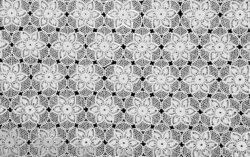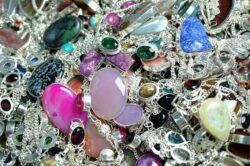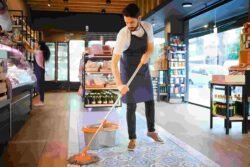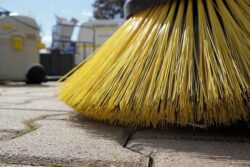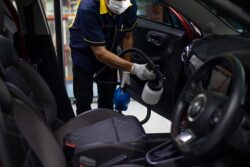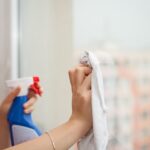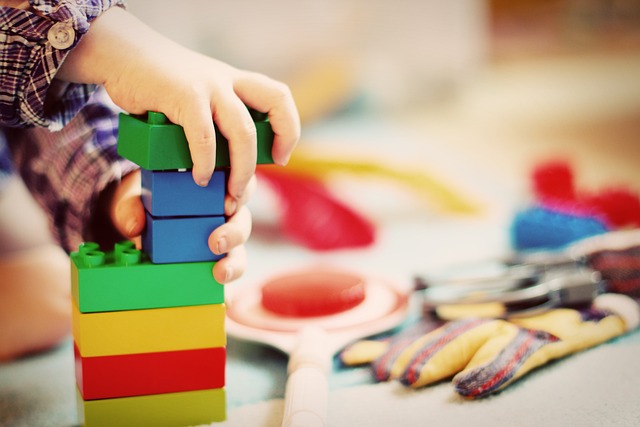
Children’s toys are a gateway to a world of endless adventures, giggles, and imaginative play. However, with every adventure comes a little mess and the requirement for a safe and clean play area. In this guide, we will explore the world of natural cleaning for children’s toys – an adventure that guarantees both the safety of your little ones and the sparkling cleanliness of toys.
With simple and gentle cleaning methods, we aim to create an environment where play is not just fun but also worry-free, allowing children to explore their creativity and make cherished memories surrounded by toys that are as pure and joyful as their laughter. Let’s embark on this journey of safe play and clean fun, where toys become companions in a world of imagination, always ready for the next adventure.
See also our post on How to Clean and Disinfect Your Children’s Toys
Understanding Toy Materials
Identify Toy Materials
Get to know the materials of your children’s toys. Whether it’s plastic, wood, fabric, or a mix of materials, understanding what the toys are made of helps in choosing appropriate cleaning methods.
Check for Manufacturer Recommendations
Refer to the manufacturer’s guidelines for cleaning. Some toys come with specific cleaning instructions to ensure their longevity and safety, so it’s essential to follow these recommendations.
Sort Toys by Material
Organize toys based on their materials. Group plastic toys together, fabric toys together, and so on. This categorization streamlines the cleaning process and ensures the use of suitable cleaning agents for each group.
Prioritize Stuffed Toys
For stuffed toys, check if they have removable covers. If yes, follow the care instructions for the covers. If not, choose cleaning methods that won’t damage the stuffing or the fabric.
Test Cleaning Solutions
Before applying any cleaning solution, test it on a small, inconspicuous area of the toy. This helps ensure that the cleaning agent won’t cause discoloration or damage to the material.
Eco-Friendly Cleaning Solutions
Use Mild Soap and Water
For most toys, a solution of mild soap and water works wonders. This gentle mixture effectively removes dirt and is safe for various toy materials.
White Vinegar for Disinfecting
White vinegar is a natural disinfectant. Dilute it with water and use it to disinfect toys, especially those that have come into contact with germs or have been shared among children.
Baking Soda for Stains
Create a paste using baking soda and water to tackle stubborn stains on plastic or hard-surface toys. Apply the paste, let it sit, and then scrub gently.
Lemon Juice for Natural Freshness
Lemon juice not only cleans but also adds a fresh scent to toys. Mix it with water for a natural cleaning solution that leaves toys smelling citrusy and clean.
Tea Tree Oil for Antibacterial Action
Tea tree oil has antibacterial properties. Add a few drops to a water and vinegar solution to enhance the disinfecting power when cleaning toys.
See also our post on Natural Solutions for Tough Cleaning Challenges: Stains, Mold, and More
Cleaning Techniques for Different Toys
Wipe Down Hard Plastic Toys
For hard plastic toys, use a cloth or sponge dampened with soapy water. Ensure you reach all crevices and corners, and wipe dry to prevent water from accumulating.
Immersion for Bath Toys
Bath toys often accumulate mold. Immerse them in a solution of vinegar and water, then scrub with a brush. Ensure thorough drying to prevent future mold growth.
Machine Washable Fabric Toys
If fabric toys are machine washable, place them in a pillowcase or laundry bag for protection. Use a gentle cycle with mild detergent and let them air dry.
Handwashing Soft Toys
Handwash soft toys with care. Submerge them in a soapy water solution, gently scrub, and rinse thoroughly. Allow ample drying time to prevent mildew.
Wooden Toys: Wipe and Dry
For wooden toys, use a damp cloth with mild soap to wipe them down. Dry them immediately to prevent wood from absorbing moisture and potentially warping.
Sanitizing High-Touch Toys
Identify High-Touch Areas
Recognize high-touch areas on toys, such as handles, buttons, or surfaces that children frequently touch. Pay special attention to these areas during cleaning.
Disinfecting with Natural Solutions
Utilize natural disinfectants like vinegar or tea tree oil for high-touch toys. Wipe down these surfaces with a cloth soaked in the disinfecting solution.
Sunlight for Natural Disinfection
Take advantage of sunlight for natural disinfection. Place toys in direct sunlight for a few hours. The sun’s UV rays have natural antibacterial properties.
Consider UV-C Light
For electronic toys, consider UV-C light devices designed for disinfection. Follow manufacturer instructions carefully to ensure safe usage.
Regular Cleaning Routine
Incorporate toy cleaning into a regular routine, especially for toys that see frequent use. Consistency in cleaning promotes a healthier play environment.
See also our post on 10 Benefits of Using Natural Air Fresheners in Your Home
Toy Storage and Organization
Segregate Toys by Age
If you have children of different age groups, segregate toys by age. This ensures that younger children don’t access toys with small parts that could be a choking hazard.
Use Labeled Bins
Organize toys in labeled bins. This not only keeps toys sorted but also makes it easier for children to know where to return them after play.
Rotate Toys
Consider rotating toys periodically. This keeps playtime exciting and allows for a more thorough cleaning of toys that are not currently in use.
Store Stuffed Toys Smartly
For stuffed toys, avoid piling them on top of each other. This prevents compression and maintains the fluffiness of the toys.
Teach Kids to Clean Up
Encourage children to participate in cleaning up their toys. This not only instills a sense of responsibility but also ensures toys are returned to their designated spots.
Toy Repairs and Maintenance
Check for Wear and Tear
Regularly inspect toys for wear and tear. Repair or discard any toys that have broken parts, sharp edges, or potential safety hazards.
Mend Fabric Tears
If fabric toys have small tears, mend them promptly to prevent further damage. Use a needle and thread or fabric glue for simple repairs.
Reinforce Stuffed Toys
For stuffed toys losing their fluffiness, consider adding additional stuffing or sewing up any seams that are coming undone.
Glue for Small Fixes
For minor fixes on plastic or wooden toys, use child-safe glue. Ensure proper ventilation and follow safety guidelines when using glue.
Battery Replacement for Electronic Toys
If electronic toys use batteries, replace them regularly. Dispose of old batteries properly to prevent leaks that could damage the toy.
Teaching Children about Cleanliness
Lead by Example
Children learn by observing. Lead by example and demonstrate the importance of cleaning and taking care of belongings.
Make Cleaning Fun
Turn cleaning into a game. Incorporate music or create a challenge to see who can clean up the fastest. Making it fun encourages children to participate willingly.
Explain the Importance
Communicate with children about why keeping toys clean is essential. Help them understand the connection between cleanliness and staying healthy.
Involve Them in Cleaning
Involve children in the cleaning process. Let them wipe down their toys or assist in organizing. This hands-on experience fosters a sense of responsibility.
Reinforce Healthy Habits
Use toy cleaning as an opportunity to reinforce broader healthy habits. Discuss the importance of washing hands before and after playtime.
See also our post on Zero-Waste Kitchen Cleaning: Sustainable Solutions for Spills and Stains
Conclusion
Let every laugh and every story told with a favorite toy be accompanied by the knowledge that the play environment is as safe and pure as the laughter it houses. Safe play, clean fun—it is a recipe for a childhood filled with delightful memories and carefree exploration. Let the journey of natural cleaning for children’s toys be about creating a safe and healthy space for endless childhood adventures. By understanding toy materials, using eco-friendly cleaning solutions, adopting appropriate cleaning techniques, emphasizing toy storage and organization, addressing toy repairs and maintenance, and teaching kids about cleanliness, you can guarantee that playtime is not only clean but also joyful and caring.
